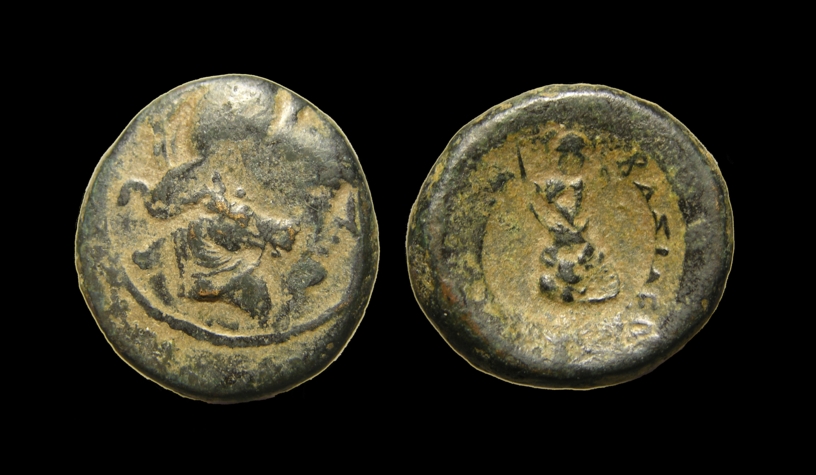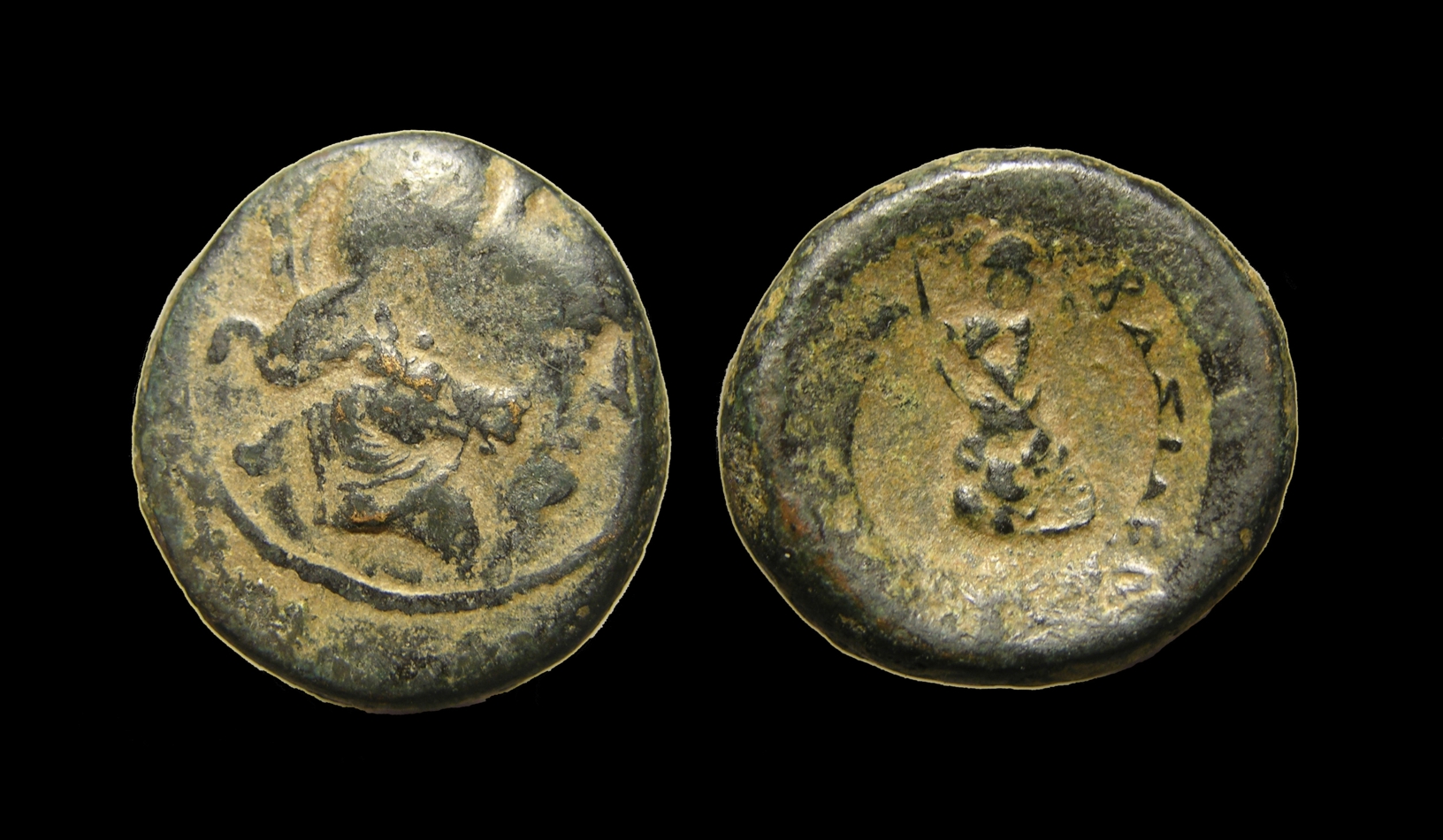 Hover to enlarge
Hover to enlarge

Antiochus I
Mint: Uncertain mint 22, coining for Edessa or Anthemous
280 to 261 BC
Obvs: Bridled horse over Athena wearing crested Corinthian helmet.
Revs: BAΣIΛEΩΣ ANTIOXOY, Trophy of arms over struck by uncertain type.
AE 16x18mm, 6.36g
$0.00
Order # G 243
Ref: SC ---
Note: Undertype SC 361; HGC 9, 150(R1)
NFS
